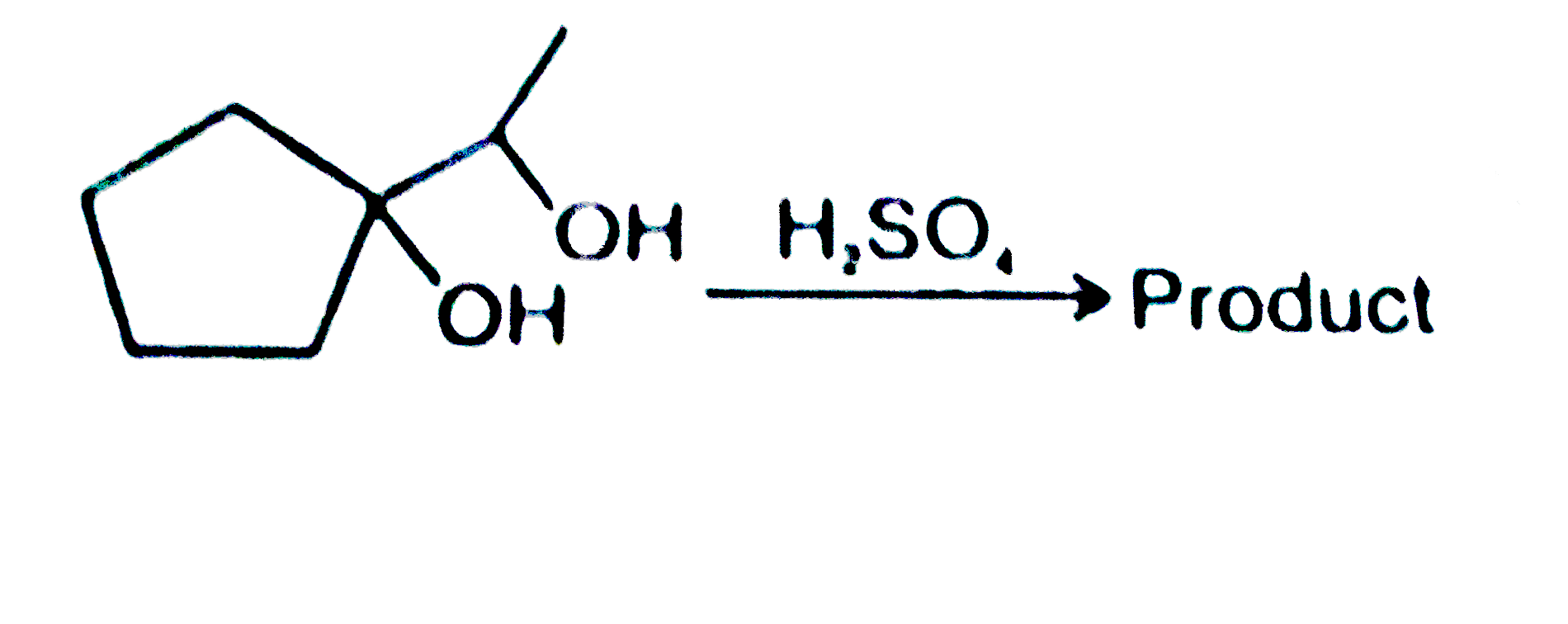Account for the following:
(i) In reaction involving cleavage of carbon-oxygen bond of alcohols some acid is added to facilitate the reaction.
(ii) The order of reactivity of halogen acids with alcohols is HI>HBr>HCl.
(iii) Phenols do not undergo substitution at the carbon of C-OH bond.
Step by step video & image solution for Account for the following: (i) In reaction involving cleavage of carbon-oxygen bond of alcohols some acid is added to facilitate the reaction. (ii) The order of reactivity of halogen acids with alcohols is HI gt HBr gt HCl. (iii) Phenols do not undergo substitution at the carbon of C-OH bond. by Chemistry experts to help you in doubts & scoring excellent marks in Class 12 exams.
Updated on:21/07/2023Topper's Solved these Questions
- ALCOHOLS, PHENOLS AND ETHERS Book:ICSEChapter:ALCOHOLS, PHENOLS AND ETHERS Exercise:ISC EXAMINATION QUESTIONS
Explore 25 Videos
- ALCOHOLS, PHENOLS AND ETHERS Book:ICSEChapter:ALCOHOLS, PHENOLS AND ETHERS Exercise:EXERCISE (PART-II Descriptive Questions) (SHORT ANSWER QUESTIONS)
Explore 116 Videos
- ALCOHOLS , PHENOLS AND ETHERS Book:ICSEChapter:ALCOHOLS , PHENOLS AND ETHERS Exercise:SOURCE BASED QUESTIONS
Explore 4 Videos
- ALDEHYDES, KETONES AND CARBOXYLIC ACIDSBook:ICSEChapter:ALDEHYDES, KETONES AND CARBOXYLIC ACIDSExercise:EXERCISE (PART-II DESCRIPTIVE QUESTIONS) ( LONG ANSWER QUESTIONS)
Explore 478 Videos
Similar Questions
Order of reactivity of halogen acids towards an alcohol is:(HCl,HBr,HI)
View SolutionAlcohols undergo acid catalysed elimination reactions to produce alkenes. Because water is lost in the elimination , this reaction is called dehydration reaction. Secondary and tertiary alcohols always give E1 reaction in dehydration. Primary alcohols whose β-carbon is branched also give E1 reaction. The reactivity of alcohol for elimination reaction is tertiary alcohol gt secondary school gt Primary alcohol.
Identify the product in the given reaction :

View Solution
Knowledge Check
Amongst the following, which are true for SN2 reaction ? (i) The rate of reaction is independent of the concentration of the nucleophile. (ii) The nucleophile attacks the carbon atom on the side of the molecule opposite to the group being displaced. (iii) The reaction proceeds with simultaneous bond formation and bond rupture.
A(i), (ii)B(i), (iii)C(i), (ii), (iii)D(ii), (iii)
A : The reactivity order of alcohols is 1∘>2∘>3∘ for the reaction in which O-H bond is broken .
R : The reactivity order of alcohol is 3∘>2∘>1∘ for the reaction in which C - O bond is broken .
View SolutionAlcohols undergo acid catalysed elimination reactions to produce alkenes. Because water is lost in the elimination , this reaction is called dehydration reaction. Secondary and tertiary alcohols always give E1 reaction in dehydration. Primary alcohols whose β-carbon is branched also give E1 reaction. The reactivity of alcohol for elimination reaction is tertiary alcohol > secondary alcohol > Primary alcohol.
Which of the following dehydration product (major ) is incorrect ?
View SolutionAccount for the following :
(i) PCl5 is more covalent than PCl3.
(ii) Iron on reaction with HCl forms FeCl2 and not FeCl3.
(iii) The two O-O bond lengths in the ozone molecule are equal.
View SolutionEstablish the structure of a hydrocarbon C5H10 from the following facts :
(i) The hydrocarbon yields 2-methyl butane on catalytic reduction.
(ii) The hydrocarbon adds HBr to form a compound (B) which on reaction with moist silver oxide produces an alcohol (C).
(iii) The alcohol (C) on oxidation gives a ketone containing the same number of carbon atoms.
View SolutionRead the given passage and answer the questions number 1 to 5 that follow:
The substitution reaction of alkyl halide mainly occurs by SN1 and SN2 mechanism. Whatever mechanism alkyl halides follow for the substitution reaction to occur, the polarity of the carbon halogen bond is responsible for these substitution reactions. The rate of SN1 reactions are governed by the stability of carbocation whereas for SN2 reactions steric factor is the deciding factor. If the starting material is a chiral compound, we may end up with an inverted product or racemic mixture depending upon the type of mechanism followed by alkyl halide. Cleavage of ethers with HI also governed by steric factor and stability of carbocation, which indicates that in organic chemistry, these two major factors help us in deciding the kind of product formed
1. Predict the stereochemistry of the product formed if an optically active alkyl halide undergoes substitution reaction by SN1 mechanism.
2. Name the instrument used for measuring the angle by which the plane polarised light is rotated.
3. Predict the major product formed when 2-Bromopentane reacts with alcoholic KOH.
4. Give one use of CHI3
5. Write the structures of the products formed when anisole is treated with HI.
View Solution(a) How many you account for the following :
(i) Aldehydes are more reactive than ketones towards nucleophiles.
(ii) The boiling points of aldehydes and ketones are lower than of the corresponding acids.
(iii) The aldehydes and ketones undergo a number of addition reactions.
(b) How will you distinguish between these compounds:
(i) Acetaldehyde and benzaldehyde
(ii) Propanone and propanol
View SolutionAccount for the following :
(i) CH3CHO is more reactive than CH3COCH3 towards reaction with HCN.
(ii) Carboxylic acid is a stronger acid then phenol .
(b) Wrtie the chemical equations to illuustrate the following reaction :
(i) Wolff-Kishner reduction
(ii) Aldol condensation
(iii) Cannizzaro reaction
View Solution
